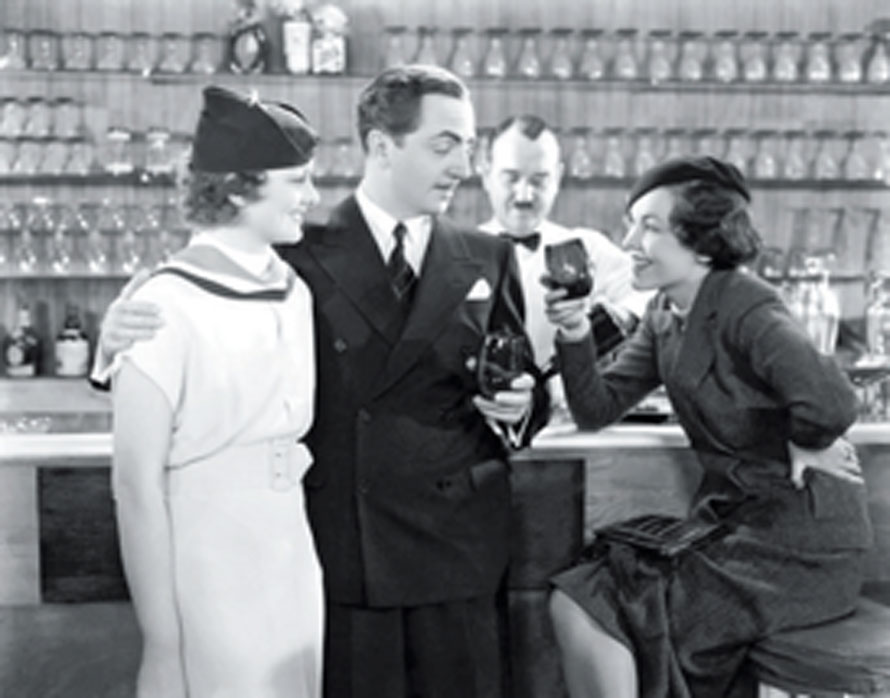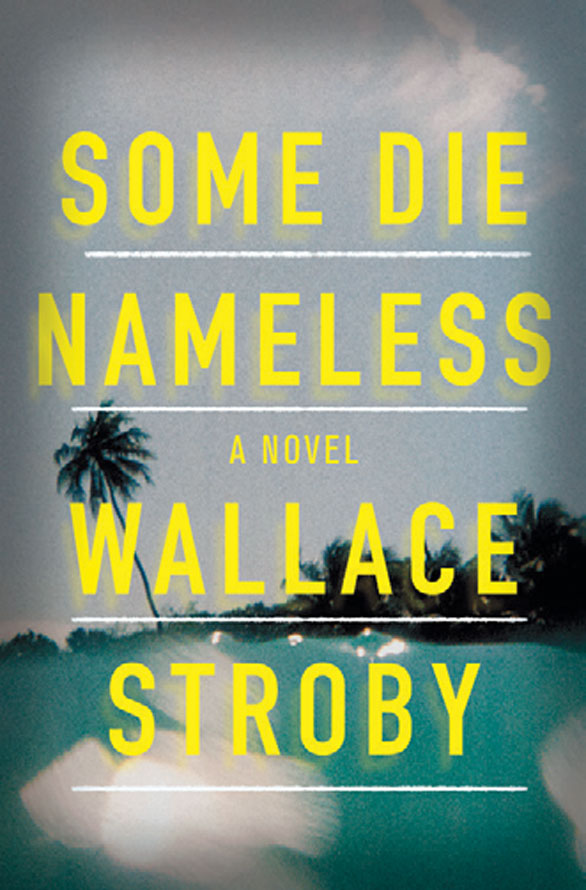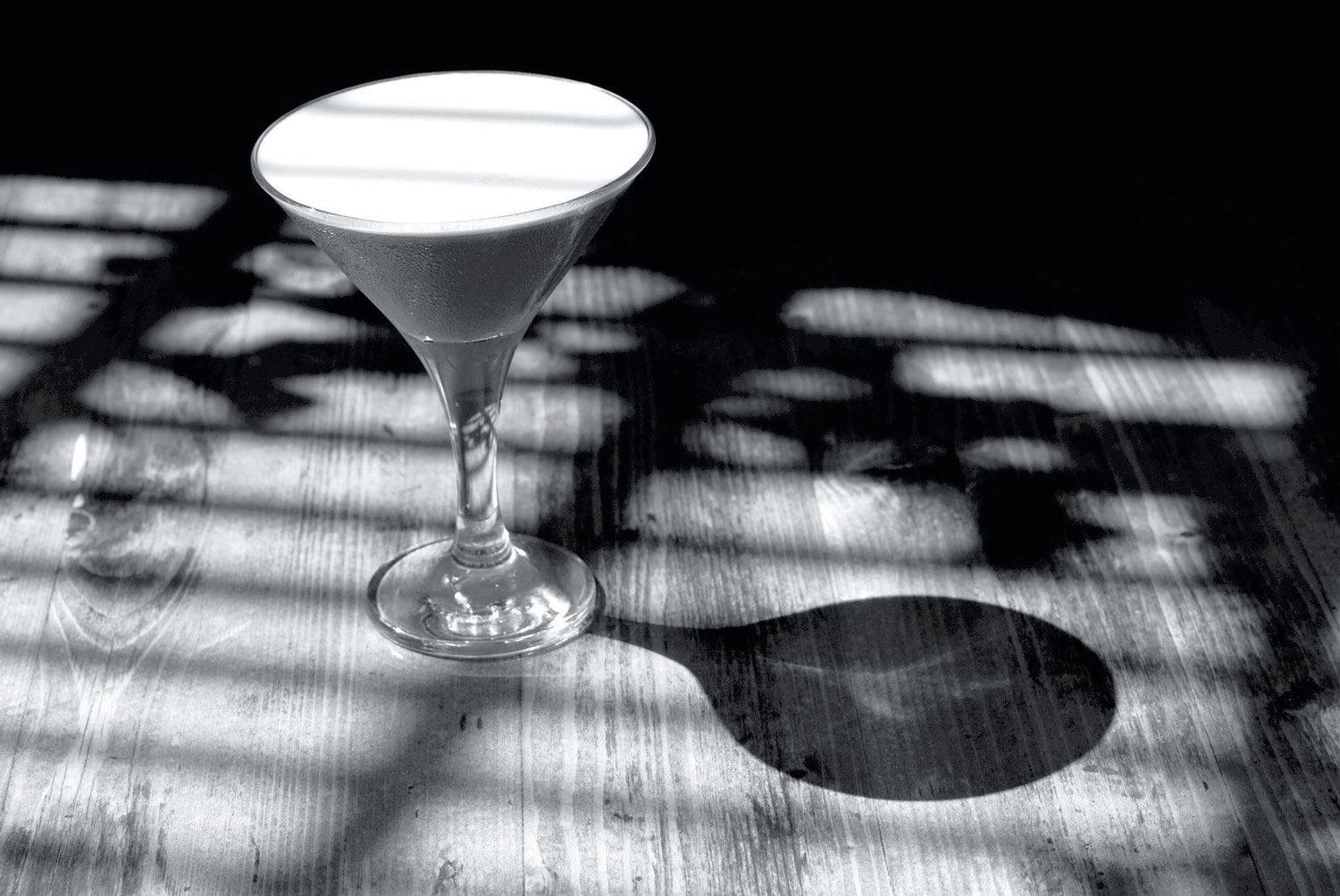Crimes and Cocktails
In fiction, a proper gimlet (or a red wine) revels character
Spade sat in the green chair. The fat man began to fill two glasses from bottle and siphon . . . . “We begin well, sir,” the fat man purred, turning with a proffered glass in his hand. “I distrust a man that says when. If he’s got to be careful not to drink too much it’s because he’s not to be trusted when he does.” Spade took the glass and, smiling, made the beginning of a bow over it.
—from The Maltese Falcon, by Dashiell Hammett
Crime is a thirsty business.
From the earliest days of the genre, American crime fiction and alcohol have been potent mixers. Many a down-at-the-heels detective has kept an office bottle to ward off bouts of existential angst or calm a troubled blonde.
In 1930’s The Maltese Falcon, Dashiell Hammett’s private eye, Sam Spade—the man who doesn’t say when—consumes a variety of cocktails in his search for the Black Bird. In one scene, he fortifies himself for a night’s sleuthing with a not-very-appealing pre-mixed Manhattan, served up in a paper cup, from a bottle he keeps in his desk.
He filled the cup two thirds full, drank, returned the bottle to the drawer, tossed the cup into the wastebasket, put on his hat and overcoat, turned off the lights and went down to the night-lit street.
Spade is practically a teetotaler compared to Nick and Nora Charles in Hammett’s 1934 novel, The Thin Man (also the basis of the film series starring William Powell and Myrna Loy). The husband-and- wife detective team visit a number of Manhattan speakeasies in the course of the book, and seem to have a drink—usually Scotch—in hand at every turn. In a 2014 essay, critic Michael James Roberson estimated that Nick consumes 33 drinks in the course of the novel, or about one every six pages.
Raymond Chandler’s Philip Marlowe stocked his L.A. office with standby bourbons such as Old Forester and Four Roses. But Chandler’s real contribution to cocktail lore is the gimlet, immortalized in his 1953 novel, The Long Goodbye. In that book, Marlowe is introduced to the drink by his somewhat-shady friend, Terry Lennox.

Still with Myrna Loy, William Powell, and Maureen O’Sullivan in The Thin Man (1934). Photograph: Metro-Goldwyn-Mayer - own work, nostromo979, public domain, https://commons.wikimedia.org/w/index.php?curid=9438495

We sat in a corner of the bar at Victor’s and drank gimlets. “They don't know how to make them here,” he said. “What they call a gimlet is just some lime or lemon juice and gin with a dash of sugar and bitters. A real gimlet is half gin and half Rose’s Lime Juice and nothing else. It beats martinis hollow.”
Travis McGee, John D. MacDonald’s boat bum / knight errant / salvage consultant, was also a gin man—and a bit of a snob about it. Throughout most of the series (21 books) he drinks Plymouth Gin, but gives it up once he learns it’s not bottled in the U.K. anymore, but made domestically. “It’s still a pretty good gin,” McGee offers in 1974’s The Dreadful Lemon Sky. “But it is not a superb, stingingly dry, and lovely gin.”
By the next book, 1978’s The Empty Copper Sea, he’s moved on to Boodles British Gin, and he’s a Boodles man for the rest of the series. He even has his own personal martini, dubbed “The McGee.” Its making is lovingly detailed (before the switch to Boodles) in 1968’s Pale Gray for Guilt, when McGee and a lady friend visit an airport cocktail lounge.
A familiar face was working the quiet and elegant bar, and he remembered The Drink . . . . Two ample old-fashioned glasses, side by side, filled to the two thirds line with cracked ice. A big, unmeasured slosh of dry sherry into each glass. Then swiftly, the strainer placed across the top of one and then the other, as with a delicate snap of the wrist he dumped the sherry down the drain. Then fill to the ice level with Plymouth gin, rub the lemon peel around the inside of the rim, pinch some little floating beads of citrus oil on the surface of the drink, throw away the peel, present with small tidy bow and flourish to the folk. 'Two McGees,' said he.
Drinking on the job isn’t just the prerogative of the traditional white male detective. Sara Paretsky’s tough private investigator, V.I. Warshawski—the heroine of 19 books—is partial to red wine from the Italian hill country of Torgiano (her mother hails from there), but also enjoys Johnnie Walker Black. That’s a taste she shares with Ernest Tidyman’s John Shaft, one of the first African-American detectives in crime fiction. In the first Shaft novel, he poses as a Greenwich Village bartender to outwit a pair of Mafia thugs, but can’t resist pouring himself a drink neat from the bottle.
Shaft got a small chaser glass off the drying towels, hunted up the quart of Johnnie Walker Black Label on the high shelf in front of the mirror. He poured an inch of amber into it, raised it and let the golden heat roll down his throat. A toast to nobody, a toast to himself.
What a protagonist drinks—or doesn’t—can also be a shorthand way to help establish character. Crissa Stone, the professional thief and heroine of four of my novels, beginning with 2011’s Cold Shot to the Heart, only drinks wine. Raised in poverty in a dusty Texas town, her choice of drink is part of her attempt to reinvent herself, and leave who she once was behind. Ray Devlin—the ex-mercenary hero of my eighth novel, Some Die Nameless—had an ongoing drinking problem after being gravely wounded while helping to orchestrate a South American coup in the ’90s, but now allows himself the occasional Dos Equis. Though, when he shares one in the first chapter, his guest tries to kill him.
Laura Lippman’s Tess Monaghan, a former reporter turned private detective featured in 12 novels so far, enjoys bourbon, but tries to observe fellow Baltimorean H.L. Mencken’s rules for responsible drinking: Never drink before sunset, and never drink three days in a row.
Beer is the drink of choice in Robert B. Parker’s long-running Spenser series—39 novels by him and eight by Ace Atkins. The Thrilling Detective website has an entire page cataloguing the various beers Spenser drinks over the course of the books. Not surprisingly for a Boston native, that includes a lot of Sam Adams and its many variations.
Robert Crais’ Hollywood private eye, Elvis Cole, does yoga and tai chi and drinks Evian, but hasn’t given up beer (his cat drinks it, too). For many years, Cole’s preferred brand was Falstaff, a St. Louis–made brew that stopped production in 2005. In a later book, Cole misses his Falstaff so much that he buys a case of it off eBay. Likewise, Michael Connelly’s fellow Angeleno, Harry Bosch, sticks to craft beers, specifically Anchor Steam and Fat Tire Belgian Ale.
Crime fiction tends to reflect societal trends, and that’s true for the habits of its heroes, as well. Today’s detectives are more health-conscious and imbibe less than their predecessors. For the most part, the days of the bottle in the desk drawer are gone. Lee Child’s Jack Reacher—the hero of 22 best-selling novels—drinks nothing stronger than coffee.
Clearly, times have changed. With apologies to Sam Spade and Philip Marlowe, “hard-drinking” isn’t the virtue it used to be.





